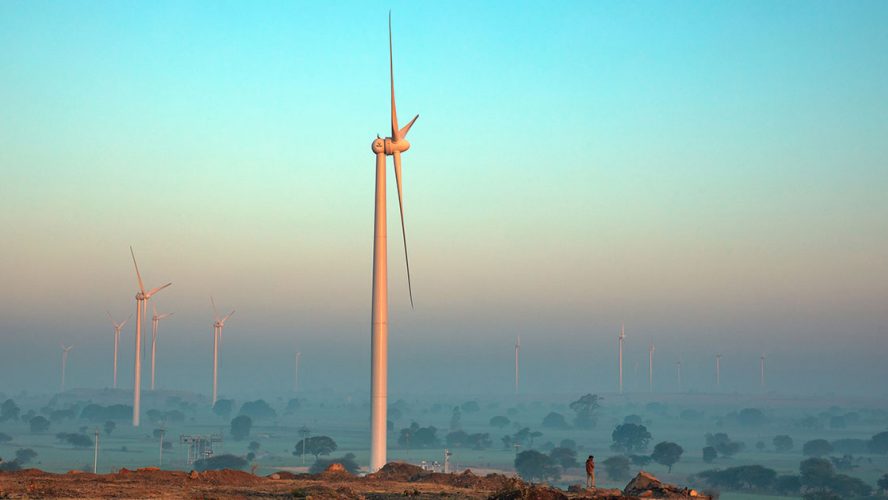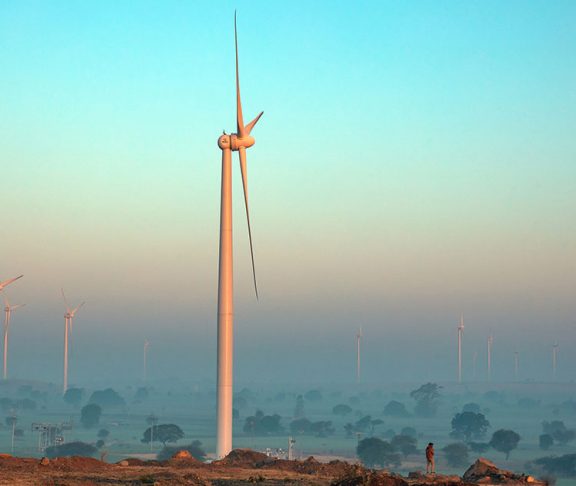It is not breaking news that wind energy and other renewables are becoming mainstream power sources in the global energy system.
We have been seeing impressive growth of wind energy across the world for the past decade, going from 160GW in 2008 to 590GW in 2018. In countries that have been leading the energy transition, such as Germany, wind energy is already meeting between 20-40 percent of their electricity demand.
Wind energy is not the “future of electricity” — it is already the electricity of today.
Blowing past conceptions that wind energy is “niche,” this clean technology is now a cost-competitive energy source, being on par in terms of cost, and even cheaper in some cases, with fossil fuels. In August, the lowest electricity price for wind energy ever was recorded in Saudi Arabia — not exactly the first country you would think of for leading the switch to renewables, based on their abundant oil resources.
Yet, more and more countries that have previously profited and depended on traditional but polluting energy sources are adding wind power and other renewables to their energy mix. Why? It’s simply good business for consumers, electricity producers, and investors alike.
It makes business sense
Wind energy and other renewables provide more jobs on average per MW than traditional energy sources. According to the International Renewable Energy Agency, more than 1 million people are employed in the wind industry across the world. These jobs are typically safer, more stable, and more gender inclusive than those in the traditional energy sector. Moreover, many of these jobs will remain in the local community because of supply chain requirements involved in developing wind power projects.
Unlike traditional energy sources, wind energy provides stable returns on investments over 20 years of a project’s lifetime. There will always be wind, whereas coal, oil, and gas have an impending expiration date. This, combined with the fact that onshore wind projects can be installed in one to two years, means investors can see money in their pockets quickly and over a long period of time, helping to boost the local economy.
It is no wonder why so many developing countries are turning to wind energy to power their growing economies. While in previous years the majority of wind energy growth was coming from industrialised markets, such as Europe and North America, the next era of wind energy will be dominated by growth in developing regions like Africa, Latin America, and Asia.
The opportunities wind energy offers to bring in high levels of steady investment, create local jobs, and help quickly meet a rising energy demand makes the decision to “go green” a no-brainer.
Investing in the future
Across the world, governments are making long-term commitments for increasingly ambitious renewable energy targets. As a low-cost, low-carbon energy source, it is a win-win situation for countries who must simultaneously meet their climate goals while continuing to grow their economies. Contrary to the misleading discourse that climate action and economic growth are mutually exclusive, the cost competitiveness of wind energy proves you can have the best of both worlds.
While wind energy continues to be on an upward growth path in markets across the world, with 60GW expected to be added each year for the next five years to bring the total to 900GW, this growth is not happening fast enough. The International Panel on Climate Change has called for more urgent deployment of renewable energy in order to limit global warming to 1.5 degrees celsius, needing renewables to supply a minimum of 70-85 percent of power demands to avoid the worst impacts of climate change.
In order to meet this target, the clean energy sector would require an additional investment of $2.4 trillion globally each year Though this is a sharp increase from current levels, the trends we are seeing now in the wind power industry show the potential returns on this investment will be undeniable.
The “green economy” is not a distant utopian dream. It is thriving here and now thanks to the contributions of wind energy.
Ben Backwell, CEO, The Global Wind Energy Council, [email protected]

